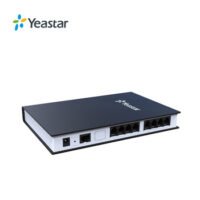Fanvil X3S P PRO IP Phone
The Fanvil X3SP Pro IP Phone is an entry-level colour screen IP Phone. With high-definition voice, 320×240 2.4-inch colour main screen, 4 SIP lines, local 6-party conference call and other extended features like EHS headset, it provides the high-quality and convenient experience for users at an affordable price.
Fanvil X3SP Pro VoIP Phone Key Features
. 4 SIP Lines, SIP hotspot
. 1000 local phonebook, caller ID, call hold, call transfer
. 2.4″ main colour display
. HD audio on speakerphone and handset
. Opus voice: can handle a variety of audio applications, including IP voice, Multiparty conference, etc.
. Support 6-party local conference
. Support EHS wireless headset
. Dual Fast ports, integrated PoE
. Stand with 2 adjustable andles of 45 and 50 degrees
. Compatible with major platforms: Asterisk, Broadsoft, 3CX, Metaswitch, Elastix, Avaya etc.
Fanvil x3sp pro Features
X3SP Pro support two power supply modes from an external power adapter or over Ethernet (PoE) complied switch.
For users who do not have PoE equipment, the traditional power adaptor should be used. If the device is connected to a PoE switch and power adapter at the same time, the power adapter will be used in priority and will switch to a PoE power supply once it fails.
The device supports two installation modes, desktop and wall-mounted. If the phone is on the desktop.
Web Management: The phone can be configured and managed on the web page of the phone. The user needs to enter the IP address of the phone in the browser and open the web page of the phone firstly. The user can check the IP address of the phone by pressing [Menu] >> [Status].
Network Configurations. The device relies on an IP network connection to provide service. Unlike traditional phone systems based on a circuit-switched wire technology, IP devices are connected to each other over the network and exchange data on a packet basis based on the devices’ IP addresses.
The device supports three types of networks, IPv4/IPv6/IPv4&IPv6
SIP Configurations A line must be configured properly to be able to provide telephony service. The line configuration is like a virtualized SIM card on a mobile phone which stores the service provider and the account information used for registration and authentication. When the device is applied with the configuration, it will register the device to the service provider with the server’s address and the user’s authentication is stored in the configurations.
The device provides twenty-line services. If both lines are configured, the user can make or receive phone calls on either line.
Be the first to review “Fanvil X3S P PRO IP Phone” Cancel reply
You must be logged in to post a review.









Reviews
There are no reviews yet.